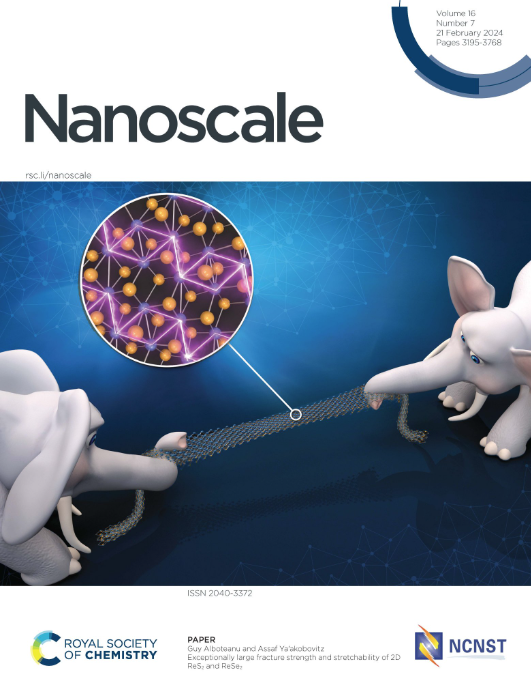高效机械能量收集和电化学应用的高性能模块化摩擦电纳米发电机的设计
IF 5.8
3区 材料科学
Q1 CHEMISTRY, MULTIDISCIPLINARY
引用次数: 0
摘要
各种形式的高熵能(HEE),如风能、海洋潮汐能、机械振动和人体运动,广泛分布在自然界和我们的环境中。有效地收集和利用这种能源已经成为解决可持续能源发展挑战的一个有希望的解决方案。摩擦电纳米发电机(TENGs)以其在获取低频和微幅机械能方面的独特优势,成为分布式能源系统领域的一项关键技术,近年来引起了学术界的广泛关注。然而,要扩大TENG的应用场景,必须不断探索提高其输出性能的方法。为了满足电化学应用对高压输出的要求,我们将行星齿轮机械结构与多层并联摩擦电纳米发电机相结合,开发了一种专用的电化学摩擦电纳米发电机(EC-TENG)。这种设计大大降低了机械能输入的阈值,同时实现了高电压输出。通过优化整流电路,有效降低了波峰因数,大大提高了输出电流。EC-TENG的最大开路电压(VOC)为575 V,短路电流(ISC)为42 μA,足以为灯具等商用电子设备供电。为了提高EC-TENG的便携性和耐用性,实施了标准化的制造和包装工艺,能够快速更换易损坏的部件,提高系统的可靠性和使用寿命。EC-TENG在高压电化学应用(如除锈)方面显示出巨大的潜力,并为分布式系统中的能量收集提供了可持续和高效的解决方案。这项工作为解决能源挑战和扩大基于teng技术的应用范围提供了新的视角。本文章由计算机程序翻译,如有差异,请以英文原文为准。
Design of high-performance modular triboelectric nanogenerator for efficient mechanical energy harvesting and electrochemical applications
Various forms of high-entropy energy (HEE), such as wind energy, ocean tidal energy, mechanical vibrations, and human motion, are widely distributed in nature and our surroundings. Effectively harvesting and utilizing this energy has become a promising solution to address the challenges of sustainable energy development. Triboelectric nanogenerators (TENGs), with their unique advantages in harvesting low-frequency and micro-amplitude mechanical energy, have emerged as a key technology in the field of distributed energy systems and have attracted significant academic attention in recent years. However, to expand the application scenarios of TENG, it is essential to continuously explore methods for improving their output performance. To meet the high-voltage output requirements of electrochemical applications, we developed a specialized electrochemical triboelectric nanogenerator (EC-TENG) by integrating a planetary gear-based mechanical structure with a multilayer parallel TENG configuration. This design significantly reduces the threshold for mechanical energy input while achieving a high-voltage output. By optimizing the rectification circuit, the crest factor was effectively reduced, and the current output was substantially enhanced. The EC-TENG demonstrated a maximum open-circuit voltage (VOC) of 575 V and a short-circuit current (ISC) of 42 μA, sufficient to power commercial electronic devices such as lamps. To enhance the portability and durability of the EC-TENG, a standardized manufacturing and packaging process was implemented, enabling quick replacement of vulnerable components and improving system reliability and service life. The EC-TENG shows great potential for high-voltage electrochemical applications, such as rust removal, and offers a sustainable and efficient solution for energy harvesting in distributed systems. This work provides a new perspective for addressing energy challenges and expanding the application scope of TENG-based technologies.
求助全文
通过发布文献求助,成功后即可免费获取论文全文。
去求助
来源期刊

Nanoscale
CHEMISTRY, MULTIDISCIPLINARY-NANOSCIENCE & NANOTECHNOLOGY
CiteScore
12.10
自引率
3.00%
发文量
1628
审稿时长
1.6 months
期刊介绍:
Nanoscale is a high-impact international journal, publishing high-quality research across nanoscience and nanotechnology. Nanoscale publishes a full mix of research articles on experimental and theoretical work, including reviews, communications, and full papers.Highly interdisciplinary, this journal appeals to scientists, researchers and professionals interested in nanoscience and nanotechnology, quantum materials and quantum technology, including the areas of physics, chemistry, biology, medicine, materials, energy/environment, information technology, detection science, healthcare and drug discovery, and electronics.
 求助内容:
求助内容: 应助结果提醒方式:
应助结果提醒方式:


